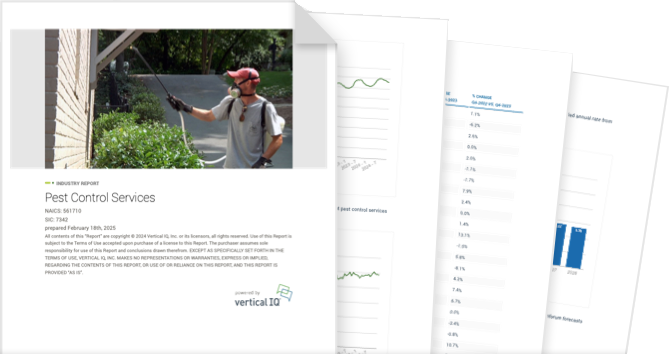Museums, Zoos and Parks NAICS 7121

Unlock access to the full platform with more than 900 industry reports and local economic insights.
Get access to this Industry Profile including 18+ chapters and more than 50 pages of industry research.
Industry Summary
The 7,700 firms operating museums, zoos and parks in the US earn revenue from contributions, gifts, and grants (public and private sources); admission fees; investment income; and resale of merchandise. Museums preserve and exhibit objects of historical, cultural and/or educational value. Historical sites involve the preservation and exhibition of sites, buildings, forts, or communities that are related to events or persons of historical significance. Zoos exhibit animal life displays. Natural parks are natural areas designated for the enjoyment of the public.
Dependence on Donations
Museums, natural parks, zoos, and related organizations are highly dependent on contributions, gifts, and grants, which account for 35% of revenue.
High Value Exhibits
Many museums, zoos, and historical sites house valuable, sometimes irreplaceable, objects or animals.
Recent Developments
May 28, 2025 - Faster Growth Forecast
- Sales for the US museums, zoos, and parks industry are projected to grow at a CAGR of 6.73% between 2025 and 2029, faster than the overall economy's projected growth, according to a forecast from Inforum and the Interindustry Economic Research Fund, Inc. Spending by US households and tourists, foreign students, and other visitors largely drives the arts, entertainment, and recreation industries. According to the forecast, real spending for museum and libraries has experienced a steady recovery since the pandemic, with gains of 12.5% in Q3 2024. Consumer confidence is expected to improve in the forecast period, which bodes well for the sector. A factor that may curb consumer spending is substantially higher tariffs on consumer goods. Lower inflation supports a moderate increase of real disposable income by about 2% in 2025 and 1.9% in 2026. Real income could suffer if average prices rise due to tariff implementation.
- Consumer confidence levels, an indicator of discretionary spending, fell in April 2025 month over month, dropping by 7.9 points, according to the Consumer Confidence Index from the Conference Board. Consumer confidence levels have fallen for five consecutive months, reaching levels not seen since the beginning of the COVID pandemic, according to The Conference Board, which publishes the monthly index. In addition, the final index of consumer sentiment from the University of Michigan dropped 8% in April 2025 from the previous month, according to CFO Dive. An index measuring consumers’ expectations for the future fell nearly a third since January, the steepest three-month percentage decline since the 1990 recession. According to survey director Joanne Hsu, “Consumers perceived risks to multiple aspects of the economy, in large part due to ongoing uncertainty around trade policy and the potential for a resurgence of inflation looming ahead.”
- The National Park Service is managing a series of staffing and real estate decisions implemented by the new Trump administration, including eliminating 1,000 probationary staff and canceling more than 30 NPS building leases that house visitor centers, law enforcement offices, and museums. According to a statement by Kristen Brengel, SVP of government affairs for the National Parks Conservation Association, “As peak travel season arrives, park visitors will have to contend with closed visitor centers and campgrounds, canceled ranger programs, and less search and rescue staff. If building leases are canceled, it will make these problems worse.” The San Francisco Gate reports that the Department of the Interior is offering NPS employees separation incentives, including severance payments of up to $25,000 to leave the agency this spring. Two US District Court judges have ordered that all fired probationary workers be reinstated, including the 1,000 NPS employees, but the agency has appealed the orders.
- The National Park Service (NPS) reported a 2% increase in attendance in recreational visits in 2024, reaching a record 331.0 million visits. The total includes 404 of the 433 National Park System units that report visit use. Of the 404 parks, 28 parks set a record for annual recreation visits. Overnight stays at concession-operated lodging were up 11.7% in 2024 year over year. NPS reported that visitors are spreading out their visits throughout the year. About 55% of parks recorded an above average number of visits in February through June and October through December. National parks were most popular type of NPS-managed site, accounting for 28% of all recreational visits in 2024, followed by national recreational areas (16%), and national memorials (12%).
Industry Revenue
Museums, Zoos and Parks

Industry Structure
Industry size & Structure
The average museum employs 19 workers and generates about $2.6 million annually. The average historical site employs 13 workers and generates about $1.2 million annually. The average zoo employs about 65 workers and generates about $7 million annually. The average natural park employs 13 workers and generates about $1.6 million annually.
- The museum, natural park, and zoo industry consists of about 7,700 firms that employ about 179,000 workers and generate $21.6 billion annually.
- The museum industry is fragmented; the top 50 companies account for about 45% of industry revenue. The historical site, zoo, and natural park industries are more concentrated, with the top 50 companies accounting for 60-66% of industry revenue.
- Museums account for about 65% of industry revenue and 70% of firms. Zoos and botanical gardens account for 23% of revenue and 9% of firms. Historical sites account for 6% of revenue and 13% of firms. Natural parks account for 5% of revenue and 8% of firms.
- Large organizations include the Smithsonian Institution, the Art Institute of Chicago, and the San Diego Zoo.
Industry Forecast
Industry Forecast
Museums, Zoos and Parks Industry Growth

Vertical IQ Industry Report
For anyone actively digging deeper into a specific industry.
50+ pages of timely industry insights
18+ chapters
PDF delivered to your inbox
